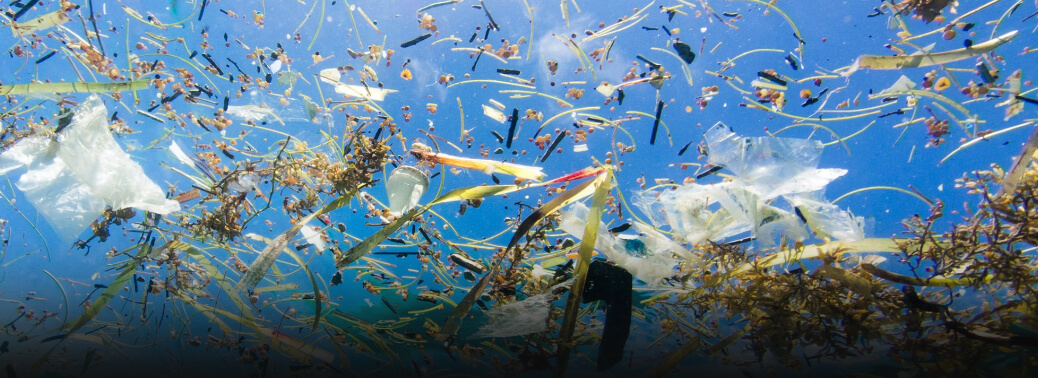Category: Agriculture
SCIENTISTS IDENTIFY A NEW SPECIES OF WASP IN GOA
02, Jun 2019
Why in News?
- • Scientists have recently identified a new species of Wasp from the genus Kudakrumia in Goa.
Highlights:
- • The Wasp, Kudakrumia Rangnekari, has been named after Goa-based researcher Parag
Rangnekar. - • It belongs to the genus Kudakrumia.
- • The Kudakrumia is a genus of primitive Wasps that is described and previously known only from Sri Lanka.
- • The new species was collected from Cotigao Wildlife Sanctuary.
- • The Cotigao Wildlife Sanctuary is located in South Goa district, of Goa.
- • The sanctuary was established in 1968.
What is a Wasp?
- • A Wasp is any insect of the order Hymenoptera and suborder Apocrita that is neither a bee nor an ant.
- • Wasps are adept at controlling pest populations and are regularly deployed to protect crops.
• For example, in Brazil, farmers control sugarcane borers with a kind of parasitic wasp
INTEGRATED FARMING NEEDED TO DOUBLE FARMER’S INCOME
24, Apr 2019
GS 3: Agriculture
Why in News?
The Vice President of India, Shri M. Venkaiah Naidu has stressed the need to promote integrated farming practices to improve the productivity of livestock and double farmers’ income.
Highlights:
- Quoting NSSO statistics, estimates, the Vice President said that rural India had an estimated 90.2 million agricultural households and facilitating sustainable income for all these households must be the primary endeavor for everyone.
- The Vice President said that a healthy and robust agricultural sector was an important prerequisite to ensure sustainable and inclusive growth in India.
- He called for measures to make farming a lucrative career opportunity, especially for the youth, by making agriculture economically viable and financially rewarding.
- Saying that Agriculture industry contributes 17% of India’s total GDP, out of which,
- The 27% comes from Animal Husbandry and overall, the dairy, poultry and
- Aqua industries contribute 4.4% to the nation’s GDP,
- The Vice President said that these numbers signify the crucial role played by these sectors in our economy.
- The Vice President urged the government, agriculture scientists and Krishi Vigyana Kendras to encourage farmers to diversify into allied services for financial stability.
Integrated Farming System:
- The Integrated Farming System (IFS) approach has multiple objectives of sustainability, food security, farmer security and poverty reduction.
- It involves use of outputs of one enterprise component as inputs for other related enterprises wherever feasible, for example, cattle dung mixed with crop residues and farm waste can be converted in to nutrient-rich vermi-compost.
• The salient features of IFS include –
• Innovation in farming for maximising production through optimal use of local resources,
• Effective recycling of farm waste for productive purposes,
• Community-led local systems for water conservation,
• Organic farming, and
• Developing a judicious mix of income-generating activities such as dairy, poultry, fishery, goat-rearing, vermicomposting and others.
Krishi Vigyan Kendra:
- A Krishi Vigyan Kendra (KVK) is an agricultural extension center in India. The name means “farm science center”.
- Usually associated with a local agricultural university, these centers serve as the ultimate link between the Indian Council of Agricultural Research and farmers, and aim to apply agricultural research in a practical, localized setting.
- All KVKs fall under the jurisdiction of one of the 11 Agricultural Technology Application Research Institutes (ATARIs) throughout India.
Responsibilities of KVKs:
- On-Farm Testing: Each KVK operates a small farm to test new technologies, such as seed varieties or innovative farming methods, developed by ICAR institutes.
- Front-line Demonstration: Due to the KVK’s farm and its proximity to nearby villages, it organizes programs to show the efficacy of new technologies on farmer fields.
- Capacity Building: In addition to demonstrating new technologies, the KVK also hosts capacity building exercises and workshops to discuss modern farming techniques with groups of farmers.
- Multi-sector Support: Offer support to various private and public initiatives through its local network and expertise. It is very common for government research institutes to leverage the network of KVKs when performing surveys with a wide range of farmers
- Advisory Services: Due to the growing use of ICT, KVKs have implemented technologies to provide farmers information, such as weather advisories or market pricing, through radio and mobile phones.
BAMBOO RICE SHOWS UP IN ODISHA
13, Apr 2019

Why in News?
- Odisha is among the states known for a wide variety of rice, the staple food of eastern and north-eastern India and beyond. Bamboo Rice
- Bamboo rice is special rice that is grown out of a dying bamboo shoot. When the bamboo shoot breathes its last, it flowers into a rare variety of rice seeds, which are known as bamboo rice.
- It is said that the bamboo rice harvesting is a major source of income for the tribal communities living in the interiors of Wayanad Sanctuary in Kerala.
- The gates of Chandaka-Dampara Wildlife Sanctuary in Cuttack district Odisha have been recently opened for forest dwellers to come and collect the rice.
Significance:
- The bamboo rice which grows only twice or thrice in a century. And it is being harvested now.
- The last collected bamboo rice in Odisha was in 1979.
- Whenever bamboo blossoms, the rat population increases. To prevent rats from running the rice, local villagers and forest dwellers collect bamboo rice.
- Also, the rice then becomes a major source of income and food for villagers living near the forest.
Nutritional content:
- The variety looks like paddy rice and tastes more like wheat.
- It is believed to have low glycaemic index compared to other varieties and it is good for diabetics.
- It’s rich in proteins and does not contain any fat.
Transgenic rice with reduced arsenic accumulation
03, Nov 2018

Why in News?
- Arsenic accumulation in rice grains is one of the serious agricultural issues in India.
- To address this, researchers at Lucknow-based CSIR-National Botanical Research Institute have developed transgenic rice by inserting a novel fungal gene, which results in reduced arsenic accumulation in rice grain.
WaarsM Gene:
- Researchers have cloned Arsenic methyltransferase (WaarsM) gene from a soil fungus, Westerdykellaaurantiaca.
- They inserted the same into the rice genome with the help of Agrobacterium tumefaciens, a soil bacterium which has natural ability to alter the plant’s genetic makeup.
- The newly developed transgenic rice along with normal rice was then treated with arsenic.
- Researchers found that the resulting transgenic plant acquired the potential for methylating inorganic arsenic to a variety of harmless organic species, including volatile arsenicals.
- This could be potential strategy for developing transgenic rice capable of low arsenic accumulation not only in grain but also in straw and feed which are used for livestock.
Significance of WaarsM Gene:
Other Researches:
- In the past, it has shown a transgenic approach in which phytochelatin synthase from Ceratophyllumdemersum (an aquatic plant) was expressed in rice.
- Transgenic lines showed enhanced accumulation of arsenic in roots and shoot but less in grains.
- They also described that over expression of OsGrx_C7 (protein found in rice) enhanced tolerance to arsenite and reduced arsenite accumulation in seeds and shoots of rice.
- Recently, they have showed that OsPRX38 transgenics accumulate less arsenic due to high lignification in root which acts as a barrier for arsenic entry in transgenic plants.
- In this background, biotechnological methods such as modulating the expression of Arsenic metabolism-related genes in rice will be a fruitful and practical approach to decrease arsenic accumulation.
Mega Food Park Scheme
02, Nov 2018

Why in news?
- Union Minister for Food Processing Industries Harsimrat Kaur Badal inaugurated 2nd Mega Food Park in Maharashtra, in Wahegaon and Dhangaon village in Maharashtra.
- A 3rd Mega Food Park has been sanctioned by the Ministry in Maharashtra and is under implementation in Wardha District while the first Park was inaugurated on 1st of March 2018 in Satara district.
Paithan Mega Food Park:
- The Paithan Mega Food Park has been set up in 102 acre of land at a cost of Rs. 124.52 crore.
- The Mega Food Park will leverage an additional investment of about Rs. 250 crore in 25-30 food processing units in the park and would eventually lead to a turnover of about Rs. 450-500 crore annually.
- The Park will also provide direct and indirect employment to 5,000 persons and benefit about 25,000 farmers in the CPC and PPC catchment areas.
Significance:
- The modern infrastructure for food processing created at Park will benefit the farmers, growers, processors and consumers of Maharashtra and adjoining areas immensely and prove to be a big boost to the growth of the food processing sector in the State of Maharashtra.
- This mega food park will benefit the people of Aurangabad district as well as nearby districts of Nashik, Dhule, Jalgaon, Buldhana, Jalna, Bid and Ahmedabad.
Mega Food Park Scheme:
- India aims to be a resilient food economy and the Food Factory of the World as the government has made Food Processing a major thrust area of ‘Make in India’.
- Aimed at giving a major boost to the food processing sector by adding value and reducing food wastage at each stage of the supply chain with particular focus on perishables MoFPI is implementing Mega Food Park Scheme in the country.
- Mega Food Parks create modern infrastructure facilities for food processing along the value chain from farm to market with strong forward and backward linkages through a cluster based approach.
- Common facilities and enabling infrastructure is created at Central Processing Centre and facilities for primary processing and storage is created near the farm in the form of Primary Processing Centers (PPCs) and Collection Centers (CCs).
- Under the Scheme, Government of India provides financial assistance uptoRs. 50.00 Crore per Mega Food Park project.
New index to check ease of doing agri-business
01, Nov 2018

Why in news?
- The Centre expects to roll out a new Ease of Doing Agri-Business Index early next year.
Highlights:
- It will rank the States on the basis of such reforms, as well as their investment in agriculture, increased productivity, reduction of input costs, and risk mitigation measures.
- The proposed index will focus on reforms, with marketing reforms (25%) and governance and land reforms (20%) carrying almost half of the weight of the parameters in its scoring system.
- The Agri Ministry will consider rewarding the higher performing States both in absolute and incremental terms by linking the performance with allocation from flexi funds made available in various flagship.
Parameters:
- The parameters are process-oriented, and are meant to evolve as and when new reforms or initiatives are proposed.
- Another major parameter which States will be rated on is their success in reducing the cost of farm inputs (20%) by distributing soil health cards and encouraging organic farming and micro-irrigation.
- Risk mitigation measures such as crop and livestock insurance carry a 15% weightage, while increased productivity and investment in agriculture carry a 10% weight each.






